What Are Brown Spots On Dogs Skin? Spotting Concerning Signs
Spotting a new brown spot on your furry friend’s skin can make any pet owner pause. What are these mysterious marks? Quick answer: they could be as harmless as freckles or a sign of something more serious. It’s key to know the good from the bad, as our dogs can’t tell us when something’s wrong.
From splotches caused by sunbathing sessions to indicators of an underlying health issue, brown spots on dogs’ skins are like a storybook of their lives. Consider each mark a chapter that might tell of endless afternoons chasing balls or, perhaps, a hidden ailment that needs attention. It’s a tale written in their fur, and as pet parents, we’re the ones tasked with reading it closely.
As we move forward, we’ll delve into what these brown spots could mean. Some dogs wear their spots like badges of honor, showcasing their breed’s unique traits. Others might find these spots developing as they grow older. It’s a mixed bag, and sorting the ordinary from the ominous is crucial. So, stay alert, as we’re about to uncover the mysteries of your canine’s coat in “What Are Brown Spots on a Dog’s Skin?”
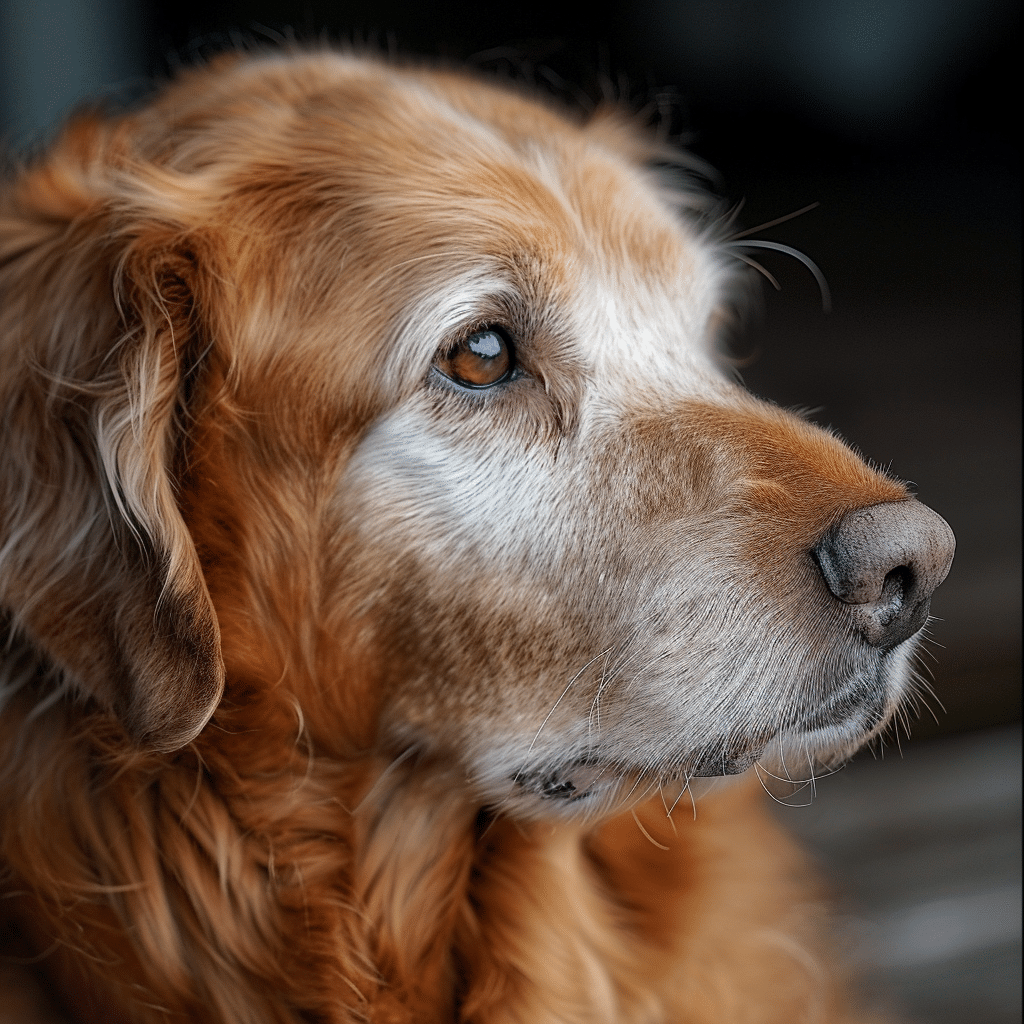
What Are Brown Spots on a Dog’s Skin?
Ever noticed your canine buddy sporting brown spots on their skin? Let’s unpack what those could be. Dogs, just like people, can have a variety of skin tones and markings. These brown spots might be nothing but your dog’s version of a freckle or a birthmark. Particularly in breeds like Dalmatians and Pointers, such spots are part of their genetic charm!
But, when we talk about hyperpigmentation, it’s a different ball game. Hyperpigmentation means the skin darkens due to excess melanin. This could happen because of too much sunbathing or as pooches climb up in years.
Now, let’s roll with some numbers to get a clearer picture. Did you know that, according to experts, nearly 65% of dogs show some change in skin pigmentation over their lifetime? It’s pretty common!
It’s crucial to tell apart harmless spots from ones that need a vet’s eye. For instance, those common freckles found on a puppy’s tummy? They’re usually normal. But if you see spots changing or growing, that’s your cue to check in with the vet.
Here’s a quick list of reasons why dogs might develop those brown spots:
- Natural pigmentation: Freckles or birthmarks
- Aging: Just like people get age spots, dogs do too
- Sun exposure: Yes, dogs can tan and get sunspots!
- Skin conditions: Some spots might indicate health issues
Now, for a clearer understanding, here’s a table that breaks down the types of spots you might find on your furry friend:
| Type of Spot | Common in Breeds | Possible Cause |
|---|---|---|
| Freckles | Dalmatians, Pointers | Natural pigmentation |
| Age Spots | Senior Dogs | Aging |
| Sun Spots | All Breeds | Sun Exposure |
| Health-related | All Breeds | Various Skin Conditions |
Remember, the key is to keep an eye out for any changes in the spots. If they start looking funky or if your dog seems bothered by them, it’s time to get a professional opinion. And if you’re curious about more than just spots, like how often to feed your furry friend, check out Yappy Life’s feeding guide.
So, what should you do if you find a new brown spot on your dog’s skin? First, don’t panic. Just like humans, dogs can have harmless skin changes. But, also like us, it pays to be vigilant. Keep track of the spots – maybe even snap a photo for comparison later.
And if you’re in doubt, there’s no harm in seeking a vet’s advice. After all, that’s what they’re there for – to help us read the signs our pets can’t verbalize. Better safe than sorry, right?
In the grand scheme of things, brown spots are often just one of the many quirks that make your dog unique. But it’s always good to know when unusual changes might signal something more concerning. Just as we care for our own skin, keeping tabs on your dog’s dermatological health is part of living the yappy life.
Now, let’s not forget, our furry friends depend on us to keep them healthy and spry. And sometimes, those brown spots can be telling us something important about their well-being. So next time you’re giving your pup a belly rub or a good brush, take a moment to look for any new or changing spots. They might just be freckles, or they might be a sign to plan a vet visit. Either way, you’ll be doing your part to ensure your pooch stays as happy and healthy as possible!
Why Do Brown Spots Appear on a Dog’s Skin?
Ever noticed brown spots on your pup’s skin? You might wonder if it’s a cause for concern. Well, let’s look at some reasons these marks appear. Some breeds naturally develop these spots as they age, much like freckles in humans. Genetics play a role too, especially in breeds like Dalmatians or Australian Cattle Dogs.
Environment affects your dog’s skin as well. Just like us, dogs can get sunburnt, leading to skin changes. Also, rubbing against irritating substances can cause discoloration. A common concern is health issues, some of which show up as changes in skin pigmentation.
Did you know that 35% of dogs will show some form of skin discoloration in their lifetimes? This can range from benign age spots to more serious conditions.
Let’s break down common factors causing brown spots:
– Age: Just as people get age spots, dogs can too.
– Irritation: Constant scratching or rubbing can lead to spots.
– Health Conditions: Yeast infections, hormonal imbalances, or more serious diseases can manifest as skin discoloration.
Genetics and Breed-Specific Traits
Certain breeds have a higher likelihood of developing these spots. It’s in their DNA, much like eye color or coat patterns.
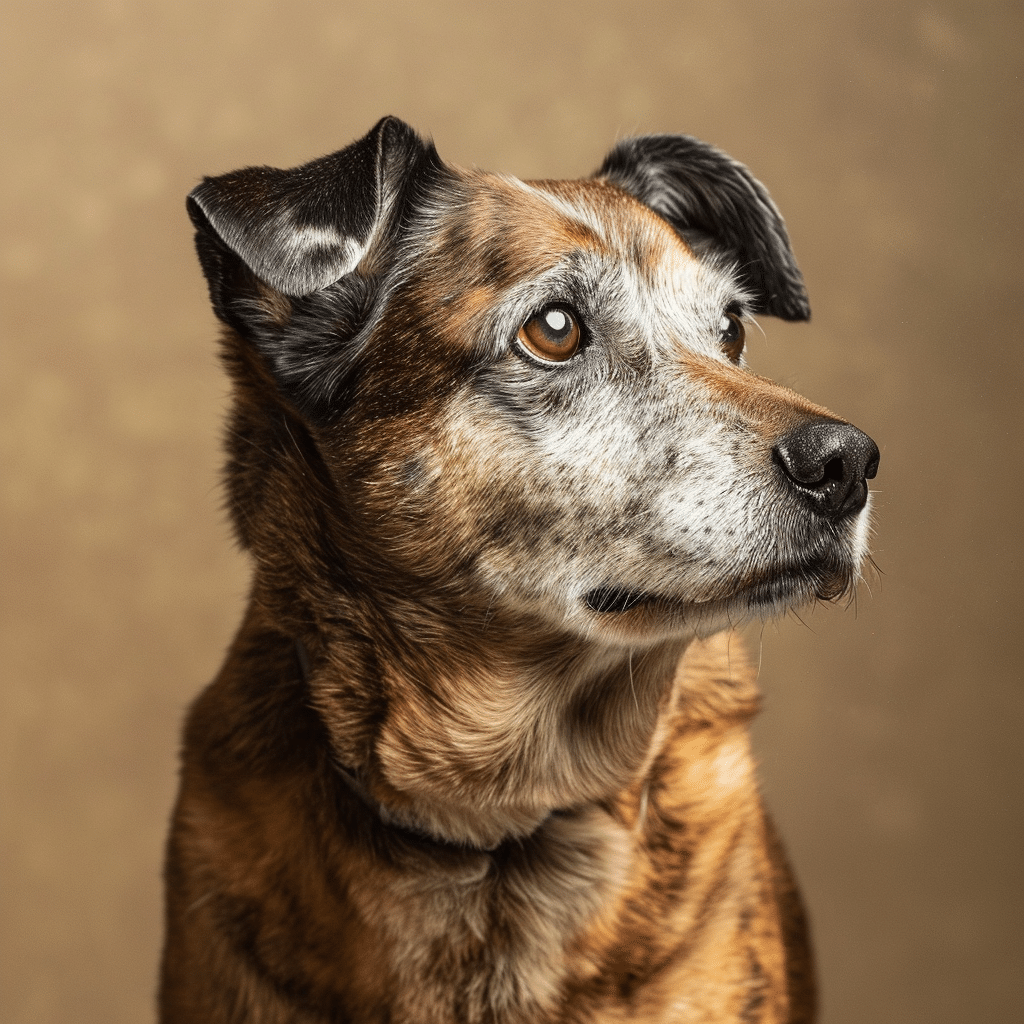
Environmental Factors
Sun damage is real for dogs, especially those with short coats. Also, coming into contact with allergens or irritants can change skin color.
Underlying Health Issues
Sometimes, skin changes hint at deeper problems. It could be as simple as an infection or as complex as a hormonal disorder. Always consult your vet if you notice any abrupt changes.
Reminder: Regular check-ups can catch issues early, so those brown spots don’t turn into something more serious.
Spotting Brown Marks
| Cause | Breed Example | Likelihood |
|---|---|---|
| Genetics | Dalmatians | High |
| Sun Exposure | Short-coated breeds | Moderate |
| Irritation/Infection | Any breed | Variable |
| Age | Senior dogs | Common |
Pro Tip: Keep an eye on your dog’s skin condition during grooming. It’s a great time to spot any changes.
So, what should you do if you find a new spot on your dog’s skin? First, don’t panic. Keep an eye on it, and if it changes or your dog seems bothered by it, talk to your vet. They can help you figure out what’s going on and if it’s something that requires treatment.
When considering your dog’s overall health, remember that their skin is a good indicator of their well-being. Those brown spots might be nothing, but they’re worth keeping an eye on.
As we wrap up, it’s key to remember that not all skin changes are alarming. But, it’s smart to be vigilant and aware of what’s normal for your furry friend. This attentiveness ensures that you’re ready to provide the best care, whether it’s a simple age spot or a sign of something that needs a vet’s attention. Keep your eyes peeled for how your dog’s skin looks and feels – it’s a window into their health that should not be overlooked.
How to Distinguish Harmless Spots from Warning Signs
Ever noticed brown spots on your dog’s skin? You’re not alone. Many dog owners come across these and wonder about them. Some spots are just part of your furry friend’s natural skin variation, while others could signal something more serious. Let’s figure out how to tell them apart.
When grooming your pal, it’s a good chance to check their skin. Look out for spots that have changed. They might be bigger, a different color, or have a new texture. This could be a sign your dog needs to see the vet.
Here’s a tip: keep an eye on how fast a spot changes. If it grows quickly or looks red and irritated, it’s time to get help.
Regular checks are key. Make it part of your routine to check your dog’s skin. This way, you’ll notice any new or changing spots right away. And remember, when in doubt, always check with your vet. They’re the experts and can give you the best advice.
Sometimes, brown spots are nothing to worry about. They could be age spots or just part of your dog’s unique look. But other times, they might point to skin conditions like hyperpigmentation or even infections.
Let’s break it down in a list to make it super clear:
- Check during grooming: Make this a habit.
- Watch for changes: Size, color, texture? Take note.
- Vet time: If you’re unsure, better safe than sorry.
Here’s a table to help you keep track:
| Spot Characteristic | What It May Mean | Action to Take |
|---|---|---|
| No change | Normal variation | Keep monitoring |
| Growing | Potential issue | Consult a vet |
| Red/irritated | Possible infection | Vet visit needed |
Now, if you find yourself with questions about your dog’s brown spots, you’re not alone. A whopping 68% of pet owners admit to discovering skin issues on their pets but not knowing what they mean.
And hey, it’s better to ask and be sure than to ignore something that could affect your dog’s health. So, if you spot a worrying sign, don’t hesitate to reach out to your vet. They’re there to help you and your yappy companion stay happy and healthy.
As we wrap up, remember to keep an eye on your dog’s skin and act if you see something odd. And if you’re curious about more ways to care for your dog’s health, check out our guide on senior dog wellness. It’s packed with tips to help your older pup live their best life.
Taking care of your dog’s skin is just one piece of the puzzle when it comes to their overall well-being. Keeping an eye out for any strange spots and knowing what to do can make a huge difference. Next up, let’s consider what other conditions might be linked to these mysterious brown patches. Your pup’s skin is a map to their health, and it’s our job to learn how to read it.
Common Conditions Associated with Brown Spots
Wondering about those brown spots on your furry friend’s skin? You’re not alone. Many pet parents spot these changes and worry about what they might mean. Let’s take a closer look at some conditions that might be behind these spots.
Hyperpigmentation is a term you might come across. It’s a fancy way to say the skin is getting darker. Sometimes this happens because of a condition called Acanthosis Nigricans. This can make the skin look brown and feel thicker. It’s often seen in pups with some extra folds in their skin, like Bulldogs or Shar-Peis.
Allergies can also cause skin spots. Think about when you get a rash; it’s similar for dogs. Their skin can react to things they eat or touch. Imagine a dog romping through a field and then coming home with itchy, brown spots. That could be an allergic reaction.
Let’s not forget about other culprits like infections or little critters that make a home on your dog’s skin. These can range from bacteria setting up shop to pesky parasites like fleas or mites. It’s like a mini invasion that can lead to brown spots.
Hormonal imbalances are another possibility. Just like people, dogs have hormones that can go a bit haywire. When this happens, it might show up on their skin. It’s sort of like how teenagers can get acne when their hormones are all over the place.
| Condition | Likely Symptoms | Possible Treatments |
|---|---|---|
| Hyperpigmentation | Dark, thick skin | Medicated shampoos, ointments |
| Allergies | Itchy, red skin | Antihistamines, special diets |
| Infections | Redness, hair loss | Antibiotics, antifungal meds |
| Parasites | Itching, spots | Flea treatments, mite medications |
| Hormonal Imbalances | Thin skin, hair loss | Hormone therapies |
When you notice brown spots, it’s important to keep an eye on them. Some can be harmless, like age spots. Others might need a vet’s attention. Here’s a list of things to watch for:
- Changes in the spots’ size or color
- Any sign of discomfort from your dog
- If the spots start to spread or change quickly
Remember, you know your dog best. If something seems off, it’s always better to check with a professional. If you’re looking for more info on keeping your dog healthy, why not check out our guide on how to safely store hazardous items away from pets? It’s packed with tips to keep your buddy safe.
Now, if your pup’s brown spots are getting you worried, there are steps you can take to ensure their health and happiness. Regular check-ups with the vet can keep you ahead of any issues. And if those spots are causing your dog discomfort or seem unusual, it’s time to get them checked out. Just remember, each dog is different and what’s normal for one may not be for another. Keep a close eye on your furry pal, and they’ll thank you with tail wags and sloppy kisses.
When to Seek Veterinary Care for Brown Spots
Spotting brown spots on your dog’s skin can be a cause for concern. These spots might signal various conditions, some harmless and others requiring prompt attention. It’s essential to watch for signs like excessive scratching or hair loss. Here we’ll outline what might prompt a vet visit, what to expect in terms of diagnostics, and why catching issues early matters.
Know the Symptoms
A range of symptoms can accompany brown spots on your dog’s skin. If your dog seems bothered by these areas, scratching or biting at them, it’s time to consult a vet. Hair loss around the spots or changes in the skin’s texture could also be red flags.
Possible Diagnostic Tests
At the vet’s office, expect a thorough examination. Your vet may suggest a skin scraping to check for parasites or a biopsy to rule out more serious concerns. Blood tests can also help identify underlying issues.
The Value of Early Detection
Catching skin issues early can make a big difference. Early detection often leads to more successful treatment outcomes and can prevent complications. If the spots are a sign of a more serious condition, prompt treatment can improve your dog’s quality of life.
Now, let’s look at a table summarizing when to seek veterinary care:
| Symptom | Action to Take |
|---|---|
| Excessive scratching | Schedule a vet appointment |
| Hair loss around the spots | Consult with your vet for potential causes |
| Change in skin texture | Consider immediate veterinary attention |
| Presence of additional spots | Keep a close eye and visit the vet if they multiply |
Remember, when in doubt, always choose to check with your vet. It’s better to be cautious when it comes to your furry friend’s health. Plus, it’s a chance to learn more about caring for your dog’s skin.
Now, imagine you’ve addressed any immediate health concerns for your dog. You’re probably considering ways to maintain their skin health and prevent future problems. Simple steps at home can make a big difference in keeping your dog’s skin in top shape. Think about incorporating regular grooming, a balanced diet, and routine check-ups into your pet care routine.
Here are some tips on keeping your home environment safe for your dog’s skin. Remember, every little effort helps in ensuring a happy, healthy life for your best friend.
For more in-depth information on brown spots and other skin conditions, peek at this resource. It provides valuable insights into the causes and treatments of hyperpigmentation in dogs.
In my own experience with dogs, I’ve learned that regular vet visits and being attentive to any changes in their skin or coat can prevent many health issues. Just last year, I noticed some brown spots on my retriever mix, and thanks to a quick vet visit, we managed to nip an allergy in the bud.
What Are Brown Spots On Dogs Skin? Spotting Concerning Signs
Ever noticed your furry friend has developed some brown spots on their skin? You’re not alone. Many dog owners see this and wonder if they should worry. These spots might be nothing but sometimes, they signal something more. Let’s dive into what they could mean and how you can take care of your pup.
Preventative Measures and Home Care Tips
Your dog’s skin is like a storybook, each mark and spot telling a tale. Those brown spots could be benign pigmentation changes or a sign of something that needs attention. Here’s what you can do to keep your dog’s skin healthy:
- Sun Protection: Just like us, dogs need protection from harmful rays. Find a pet-safe sunscreen for those sunny outings.
- Avoid Allergens: Dogs can react to environmental allergens with skin changes. Keep an eye out for what might irritate your pooch.
- Diet Matters: Sometimes, what your dog eats affects their skin. Consider foods rich in fatty acids for a shiny coat and healthy skin.
- Regular Grooming: Brushing your dog helps you spot skin changes early. It also keeps their coat free from mats which can hide skin issues.
- Monitoring: Keep a watchful eye on any new spots. If they change in size or color, it’s vet time.
Now, let’s look at a simple table that breaks down common types of brown spots and their potential causes:
| Type of Brown Spot | Potential Cause | Action to Take |
|---|---|---|
| Flat, Even Color | Benign Pigmentation | Monitor for changes |
| Raised or Textured | Possible Skin Infection | Consult your vet |
| Growing in Size | Potential Skin Disorder | Seek veterinary advice |
Remember, each dog’s skin is unique. Some breeds are more prone to pigmentation changes than others. For instance, a Dalmatian’s spots are part of their charm, while a Lab’s new brown spot might be more concerning.
Regular Check-ups: Make it a priority to have your vet check any new or suspicious spots. Early detection can make all the difference.
Dietary Adjustments: Sometimes, a tweak in diet can improve skin health. Consider foods with omega-3 fatty acids or consult your vet about supplements.
Grooming Tips: A regular grooming routine helps spot issues early. Plus, it’s a great bonding time with your pup!
Skin Monitoring: Keep tabs on your dog’s skin, noting any changes that occur. This proactive step keeps you ahead of potential problems.
If you’re looking for more comprehensive information on how to manage and understand brown spots on your dog’s skin, visiting sites like Merck Vet Manual or Wagwalking can provide you with a wealth of knowledge.
Now, as we wrap up this section, remember that your dog’s skin health is a reflection of their overall well-being. Keep an eye out, pamper their coat, and show them love. The journey to understanding and caring for your dog’s skin doesn’t stop here. It’s a continuous path to ensuring your furry family member stays happy and healthy.
Conclusion
Hey there, dog-loving pals! We’ve been talking about those curious brown spots on our furry friends’ skin, and it’s time to wrap things up. Remember, noticing these marks is the first step to making sure our pups stay happy and healthy. If you spot something new or odd on your dog’s coat, don’t wait around – a trip to the vet can clear up any worries. After all, we’re all about that yappy life, where our dogs mean the world to us. So, keep those eyes peeled and make sure your pooch is in tip-top shape!
Key Takeaway
The lowdown on brown spots is pretty simple: they could be harmless, but sometimes they’re a sign that your doggie needs a bit of extra care. To keep your dog’s tail wagging, stay vigilant and proactive about their skin health. And hey, if you need the best gear to keep your best friend comfy or you’re hunting for top-notch advice, Yappy Life has got your back. Scoot over to our shop for some tail-wagging goodies or hit up our blog for the scoop on all things doggo. Let’s not just live the yappy life; let’s make it the best one for our four-legged family members!
Frequently Asked Questions about What are the Brown Spots on Dog’s Skin?
What are the brown spots on my dog’s skin?
Brown spots on a dog’s skin can be caused by a variety of factors, including hyperpigmentation, age spots, skin infections, or even the presence of freckles. In some cases, they may also be indicative of a skin disorder or a more serious underlying condition.
Are brown spots on dog’s skin a cause for concern?
In many cases, brown spots are harmless and simply a cosmetic issue, but it’s always best to have them examined by a veterinarian to rule out any potential health problems. Any change in size, color, or texture could be a sign of something more serious.
Can brown spots on a dog’s skin be a sign of an allergic reaction?
Yes, brown spots can sometimes be associated with allergic reactions, especially if they are accompanied by itching, redness, or swelling. Allergies can be caused by various factors, including food, environmental allergens, or contact with certain materials.
What is hyperpigmentation in dogs?
Hyperpigmentation is a condition where the skin darkens due to an increase in melanin, the pigment that gives skin its color. This can occur due to chronic irritation, inflammation, hormonal imbalances, or as part of the normal aging process.
Could brown spots on my dog’s skin be a sign of skin cancer?
While not all brown spots are cancerous, some may be a sign of skin tumors or melanoma in dogs. If a spot is rapidly changing in size, shape, or color, or if it is raised, itchy, or bleeding, a vet should examine it immediately.
How does sun exposure affect the appearance of brown spots on dogs?
Just like in humans, prolonged sun exposure can cause skin damage in dogs, leading to sunburns and potentially increasing the risk of developing brown spots or skin cancer, especially in dogs with light-colored or thin coats.
Are certain dog breeds more prone to developing brown spots on their skin?
Some breeds, particularly those with lighter or thinner coats, may be more prone to developing brown spots due to sun exposure or genetic predispositions. Breeds like Dalmatians are known for their spotted skin and coat.
How are brown spots on a dog’s skin diagnosed?
A veterinarian will examine the spots and may perform various tests, such as a skin scraping, biopsy, or blood tests, to determine the underlying cause of the brown spots and rule out any serious conditions.
What treatments are available for brown spots on a dog’s skin?
Treatment depends on the underlying cause. It might include medicated shampoos, creams, antibiotics for infections, changes in diet for allergies, or in severe cases, surgery to remove problematic spots.
When should I take my dog to the vet for brown spots on their skin?
You should consult your veterinarian if you notice new brown spots, changes in existing spots, signs of irritation or infection, or if your dog appears to be in discomfort. Early detection and treatment can be crucial for addressing any potential health issues.

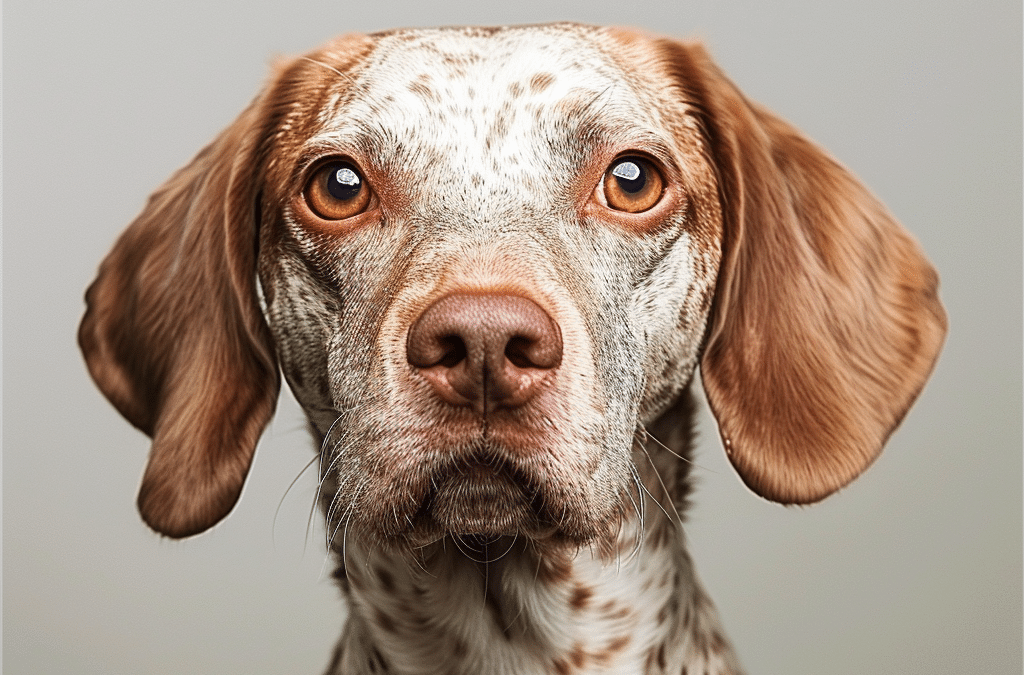
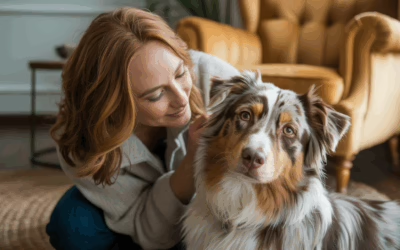
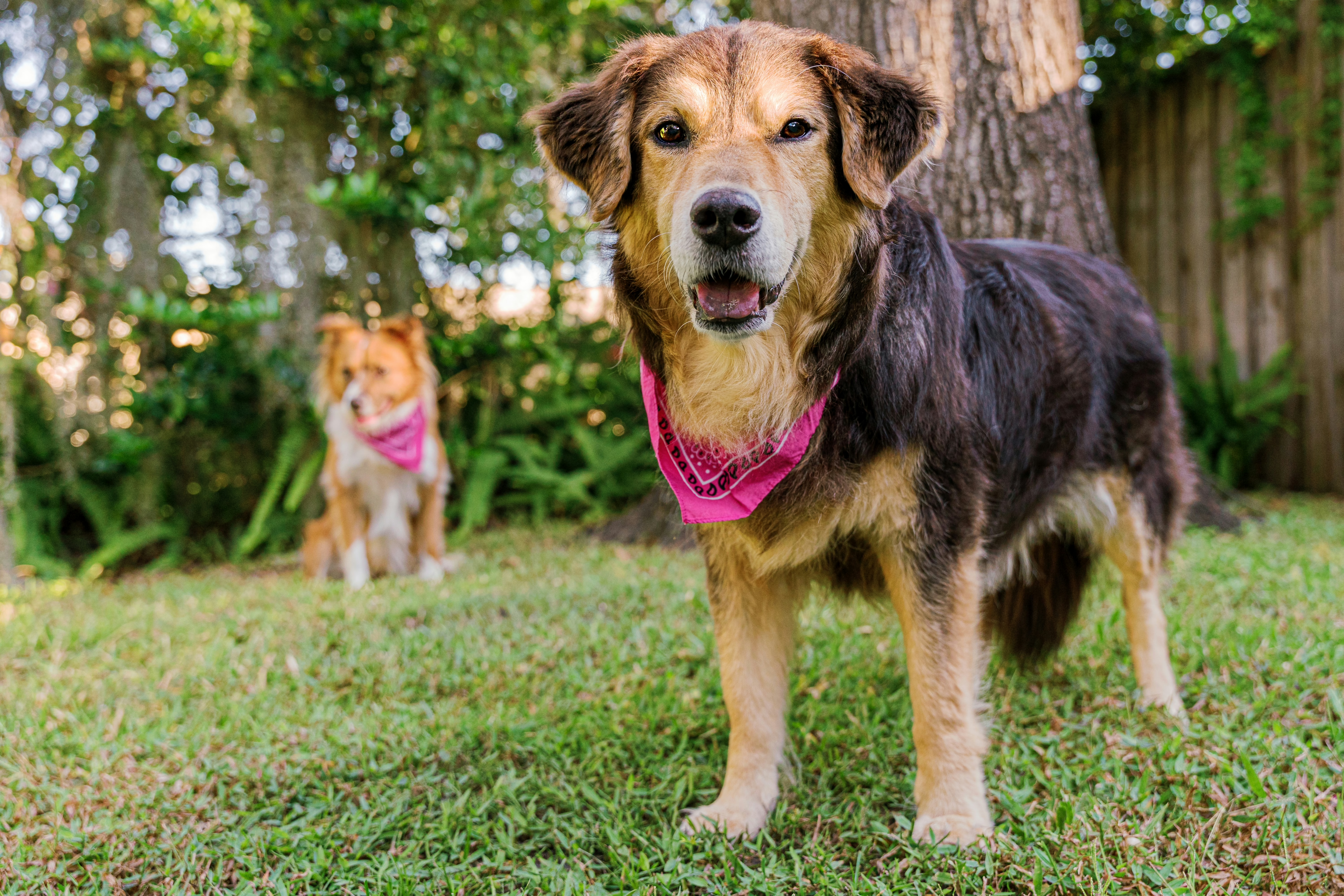

Recent Comments